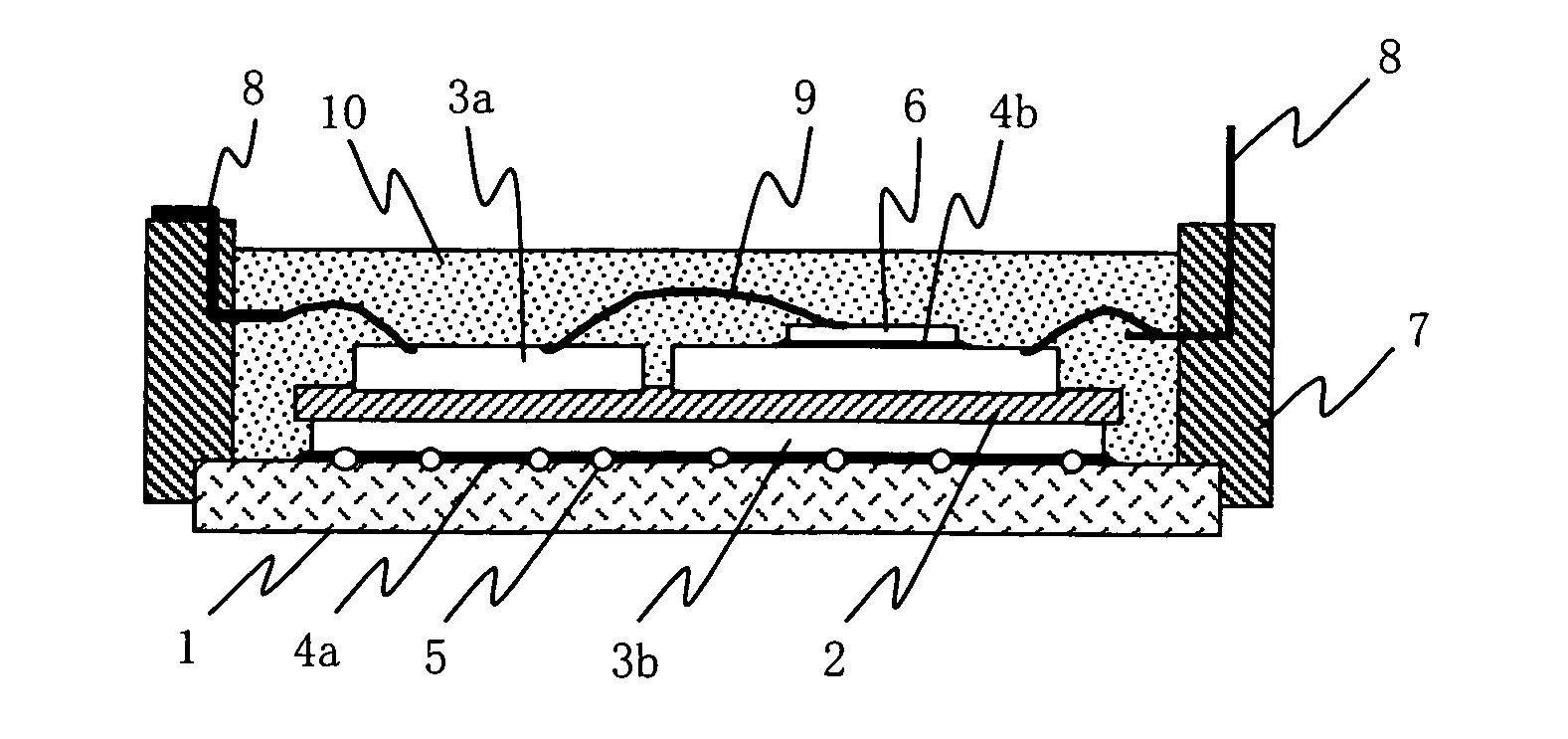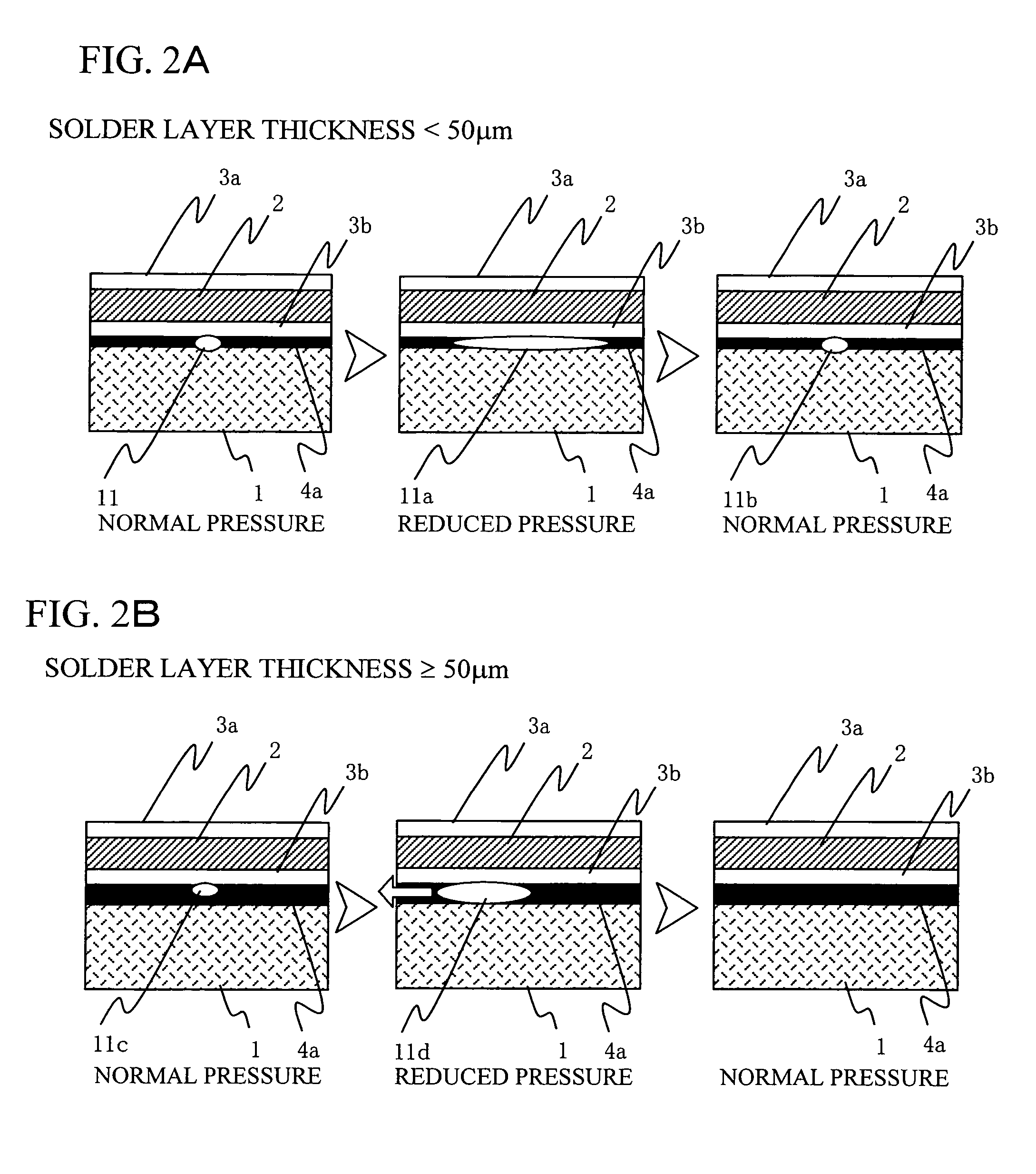Resin encapsulated semiconductor device and the production method
a technology of encapsulation and semiconductors, applied in the direction of printed circuit manufacturing, printed circuit components, printed circuit assembling, etc., can solve the problems of failure of an entire system, material fracture, crack generation, etc., and achieve superior thermal radiation characteristics and strength reliability, superior strength characteristics, and reduced stress fatigue
- Summary
- Abstract
- Description
- Claims
- Application Information
AI Technical Summary
Benefits of technology
Problems solved by technology
Method used
Image
Examples
Embodiment Construction
[0029]When silicon nitride inferior to aluminum nitride in thermal conductivity is used as the insulated layer of the circuit board, if the thickness of the insulated layer is reduced in a range by which insulated characteristics can be secured, it becomes possible to approximate the thermal radiation characteristics to those of an aluminum nitride circuit board. Further, if the thickness of metal plates bonded to both sides of the insulated layer is increased to improve thermal spread, it becomes possible to realize a circuit board superior in thermal conductivity than in the case where aluminum nitride is used. By bonding thick metal plates to a thin insulated layer, defects, such as cracking, are likely to be generated in the insulated layer due to stress generated upon soldering. However, the aforementioned configuration can be realized by using silicon nitride superior in strength characteristics.
[0030]However, when the circuit board is mounted on a base plate of good thermal c...
PUM
| Property | Measurement | Unit |
|---|---|---|
| thickness | aaaaa | aaaaa |
| thickness | aaaaa | aaaaa |
| thickness | aaaaa | aaaaa |
Abstract
Description
Claims
Application Information
 Login to View More
Login to View More - R&D
- Intellectual Property
- Life Sciences
- Materials
- Tech Scout
- Unparalleled Data Quality
- Higher Quality Content
- 60% Fewer Hallucinations
Browse by: Latest US Patents, China's latest patents, Technical Efficacy Thesaurus, Application Domain, Technology Topic, Popular Technical Reports.
© 2025 PatSnap. All rights reserved.Legal|Privacy policy|Modern Slavery Act Transparency Statement|Sitemap|About US| Contact US: help@patsnap.com



